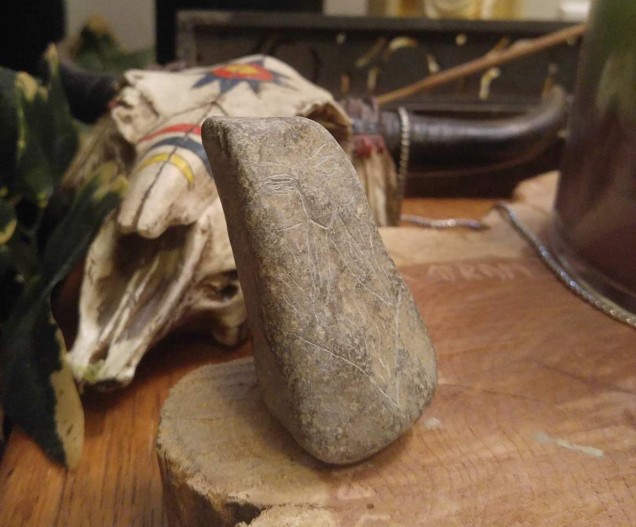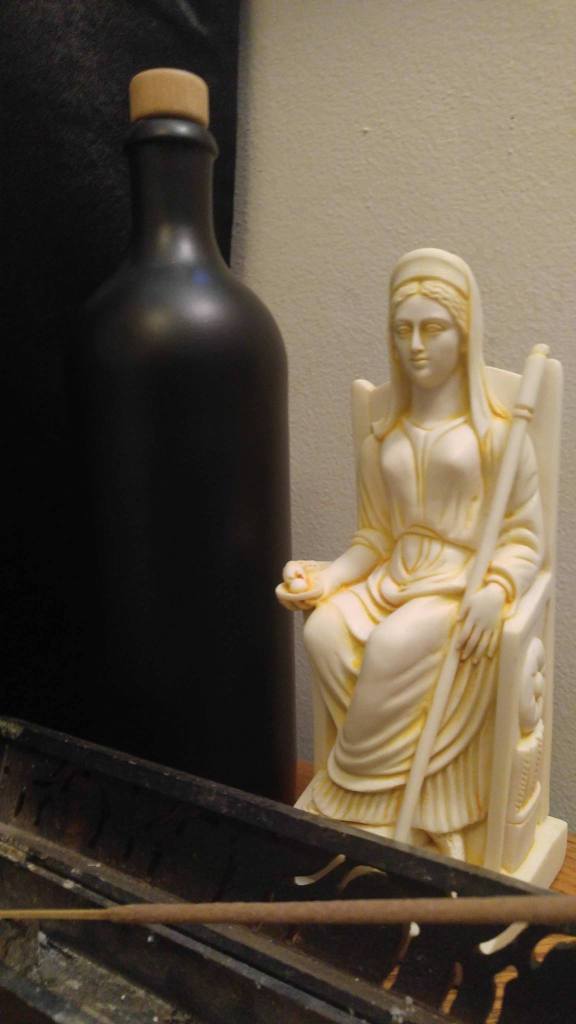Hearth-cult ritual is not something often spoken about. The general consensus of what I see online is that it is too personal to talk about. I have seen threads and dialogue that is immediately shot down when hearth practices come up. This is something I very much disagree with. Yes, hearth cult is personal; but to new or prospective Heathens it is the most logical place to start. How can they do that when no one is willing to speak about it? Thankfully, there has been an increase in these discussions, especially among Freehold Heathens. For a more articulated writing about this topic, and the inspiration for this post in general go and read this article by Of Axe and Plough of Eofores Holt Heorþ.
This article is intended to briefly showcase my first foray into hearth-cult ritual before I moved continents. My rituals have adapted as my belief system itself has adapted. Through Ásatrú to Anglo-Saxon Heathenry to a mix of ASH and Religio Romana. This is the most recent “edition” before I moved. I will endeavour to make updated posts once I have re-established my practice in a new home.
I split my day-to-day rituals into two segments. Around when I wake up in the morning and then soon before I go to bed at night. This is more preference than anything else. Starting and ending the day in ritual and with my ancestors provides some welcome comfort and order to even the most chaotic of days. My morning and nightly rituals are very similar, with the morning segment on a smaller scale. For that reason, I will only focus on the nightly ritual for this post.
I generally follow Lārhūs Fyrnsida’s ritual format, either high, low, or somewhere in between. It has worked for me more than anything I have done before, and far more consistently as well. So now, I’ll finally get to the meat of this post and say more about the actual ritual.
I begin with purification. At the very least I will wash my face and hands. Usually with some steadying breaths to put me in the correct mindset for the ritual. If I intend to be more detailed that night, I’ll say a prayer asking for my soul to be cleansed alongside my body. I don’t have a proper recipient of my prayer, but I will find one once I re-establish my practice. So I default to my ancestors, to begin with.
After this, I petition my liminal or gateway deity the Roman Vesta. During this, I will call upon Her with various epithets, light a candle as an offering, and ask Her to deliver the offerings to the appropriate recipients. Then I will thank her, for her role in the ritual and for what she does for my hearth in general. Currently, I see her as the tutelary deity of my hearth.
An example of this petition:
Salvete, Vesta.
Hearth-mother, goddess of holy fire,
FriÞweaver, Lady of the home and the bonds within it.
To you, I offer this flame as I have many nights before. I offer this in gratitude and so that you may smile upon my hearth.
I ask of you, as deity of domesticity and liminality, may you grant me communion with the Other. Allow my words and my offerings to reach the intended.
Thank you, Lady Vesta. For all that you do, whether it is noticed or unseen. I am grateful for you regardless.
Ave.
Now that I have effectively opened a line, I begin the invocation to the intended party of the ritual, which is usually my ancestors. Though occasionally it is to other powers depending on the need or occasion. For the sake of this article, I will use my ancestors. However, I will not use the exact words that I use during the ritual. I believe that words hold power, and I wish to maintain the sacredness of these words. So I will use a modified script that will do the job just as well.
After the invocation of my ancestors, whether it be general or specific, I will offer to them. Both because I am grateful and in the spirit of do ut des. Usually, I will offer another candle and some incense. Because of my limited resources at the time, I was never picky about the scents I would use. Though if I could ever get my hands on it I would use sandalwood. I would leave these to burn until the very end of the ritual. After this, I thank Them for all that they have done and continue to do.
An example of this invocation:
I call upon my Family.
My ancestors who came before, from the recent dead to the First Ancestor.
From every faith, every bloodline, to my ancestors of blood and oath.
Hear my words, if you wish it.
To you, Ancestors, I offer this flame and this incense. In gratitude, for without you I would not exist. Without every action you have made, grand or small, I would not be here in turn offering to you. I thank you for all that you have one and continue to do. Not just for me, but for this hearth and tribe.
I also give so that you may give. So that when the time ever comes that difficuly arises, or friÞbonds are tested you are there. That you may aid our family.
To you, my ancestors, my family.
Hail!
After this, I speak to my ancestors on a more personal basis. It changes night by night with whatever happened in the day or whatever may be weighing on my mind. I speak to my ancestors like I would a grandparent. With the utmost respect but comfortably and with easiness.
Once I am done speaking, I will meditate on the flames and smoke for a while. This can last a couple minutes but has lasted around an hour before. Again, this is more preference. Finally, once I am done with everything I thank all parties involved and extinguish the incense and candles.
I hope this example of my hearth-ritual has provided some insight and perhaps an inspiration for anyone reading. As with all my posts, feel free to comment, criticise, or ask questions. I am fallible and am always grateful for advice. I will gladly go into more detail about any of it. Thank you for reading.






